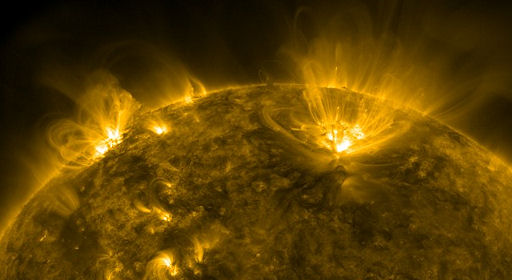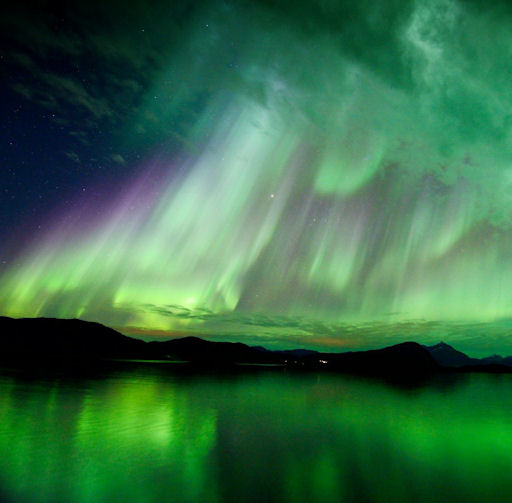Hang the Transit of Venus on your wall! Hubble-quality images from NASA's Solar Dynamics Observatory are now available as metallic posters in the Space Weather Store. | | |
ASTEROID FLYBY: Newly-discovered asteroid 2012 TC4 will fly past Earth on Oct. 12th only 96,000 km (0.25 LD) away. There is no danger of a collision, but the 16 meter-wide space rock will be close enough to photograph through backyard telescopes as it brightens to approximately 14th magnitude. NASA hopes to ping this this object with radar, refining its orbit and possibly measuring its shape. Stay tuned for updates. [3D Orbit] [ephemeris] [more]
ADVANCING SUNSPOTS: For the past two weeks, solar activity has been relatively low. Now, a change is in the offing. The farside of the sun is peppered with sunspots, and some of them are beginning to turn toward Earth. NASA's Solar Dynamics Observatory photographed this pair of active regions advancing over the eastern limb during the early hours of Oct. 11th:

Underlying each nest of glowing magnetic loops is a dark sunspot that poses a threat for solar flares. NOAA forecasters estimate a 40% chance of M-class solar flares and a 5% chance of X-flares during the next 24 hours. Solar flare alerts: text, voice.
Realtime Space Weather Photo Gallery
SATISFACTORY LIGHTS: A coronal mass ejection hit Earth's magnetic field on Oct. 8th, sparking a dramatic display of Arctic lights that is only now subsiding three days later. Hugo Løhre photographed the auroras over Lekangsund, Norway, on Oct. 10th:

"I was testing my new Nikon digital camera when these auroras appeared," says Løhre. "I am satisfied."
More lights like these could appear on Oct. 14-15. That's when a stream of solar wind spewing from a hole in the suns atmosphere (a "coronal hole") is expected to reach Earth, possibly sparking geomagnetic storms when it arrives. Aurora alerts: text, voice.
Realtime Aurora Photo Gallery
Realtime Noctilucent Cloud Photo Gallery
[previous years: 2003, 2004, 2005, 2006, 2007, 2008, 2009, 2011]
Potentially Hazardous Asteroids (
PHAs) are space rocks larger than approximately 100m that can come closer to Earth than 0.05 AU. None of the known PHAs is on a collision course with our planet, although astronomers are finding
new ones all the time.
On October 11, 2012 there were 1335 potentially hazardous asteroids.
Notes: LD means "Lunar Distance." 1 LD = 384,401 km, the distance between Earth and the Moon. 1 LD also equals 0.00256 AU. MAG is the visual magnitude of the asteroid on the date of closest approach. | | The official U.S. government space weather bureau |
| | The first place to look for information about sundogs, pillars, rainbows and related phenomena. |
| | Researchers call it a "Hubble for the sun." SDO is the most advanced solar observatory ever. |
| | 3D views of the sun from NASA's Solar and Terrestrial Relations Observatory |
| | Realtime and archival images of the Sun from SOHO. |
| | from the NOAA Space Environment Center |
| | the underlying science of space weather |

